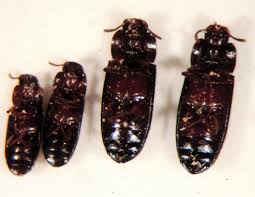



If gene-editing technology is used to suppress insect populations, it may give rise to resistance, mainly through naturally occurring genetic variation and inbreeding among targeted insects. These findings, from a study conducted at Indiana University, suggest that artificially induced genetic modifications are unlikely to spread between regions or species. Such genetic modifications, however, could have more staying power if they occur in portions of the genome where mutations are less likely to occur.

At Indiana University, a team of scientists led by biology professor Michael J. Wade, Ph.D., evaluated the degree to which synthetic gene drives based on CRISPR/Cas9 technology have the potential to control, alter, or suppress populations of crop pests and disease vectors. Gene drives refer to genes that spread at a rate of nearly 90%—significantly higher than the normal 50% chance of inheritance that occurs in sexually reproducing organisms. With natural gene drives, studies have suggested that any gene that can suppress the spread of gene-favoring infertility tends to be favored by natural selection.
Whether such an effect could limit the effectiveness of artificial gene drives, such as those based on CRISPR/Cas9 and other site-specific nuclease technologies, was the question addressed the Indiana University researchers.
“We found that small genetic variation within species—as well as many insects’ tendency to inbreed—can seriously impact the effectiveness of attempts to reduce their numbers using CRISPR technology,” said Dr. Wade. “Although rare, these naturally occurring genetic variants resistant to CRISPR are enough to halt attempts at population control using genetic technology, quickly returning wild populations to their earlier, ‘pre-CRISPR’ numbers.”
Additional details from the study appeared May 19 in the journal Science Advances, in an article entitled “CRISPR/Cas9 Gene Drives in Genetically Variable and Nonrandomly Mating Wild Populations.” This article describes how the scientists used genetic data from four populations of the flour beetle Tribolium castaneum to show that most populations harbor genetic variants in Cas9 target sites, some of which would render them immune to drive (ITD). (This species of flour beetle is estimated to destroy 20% of the world’s grain after harvest.)
“We show that even a rare ITD allele can reduce or eliminate the efficacy of a CRISPR/Cas9-based synthetic gene drive,” wrote the article’s authors. “This effect is equivalent to and accentuated by mild inbreeding, which is a characteristic of many disease-vectoring arthropods.”
The CRISPR-based interventions were designed to target three segments in the genome of the flour beetle from four parts of the world: India, Spain, Peru, and Indiana. Subsequently, when DNA segments from all four varieties of beetle were analyzed, the scientists found naturally occurring variants in the targeted gene sequence, the presence of which would impact the effectiveness of the CRISPR-based technology.
The analysis revealed genetic variation in all four species at nearly every analyzed DNA segment, including a variance rate as high as 28% in the Peruvian beetles. Significantly, Dr. Wade’s statistical analysis found that a genetic variation rate as low as 1%—combined with a rate of inbreeding typical to mosquitos in the wild—was enough to eliminate any CRISPR-based population-control methods in six generations.
The protective effect of naturally occurring genetic variation is strong enough to overcome the use of gene drives based on CRISPR-based technology—unless a gene drive is matched to the genetic background of a specific target population.
The results suggest that a careful analysis of genetic variation in the target population must precede efforts to control disease-carrying insects using CRISPR technology. They also suggest that the unintended spread of modified genes across the globe is highly unlikely since typical levels of genetic variation place a natural roadblock on spread between regions or species.
“Our analyses suggest that standing genetic variation and inbreeding could have wide-ranging and sometimes severe consequences on the efficiency of drive propagation in a wild population,” the authors of the Science Advances article indicated. “Inbreeding, which in our analyses had the most profound impact on drive propagation, may be most effectively overcome by saturation of the target population with drive individuals through repeated, high-volume releases.
“To minimize the potential impacts of ITDs on drive spread, we propose that a survey of genetic diversity at the locus of interest in the target population is a necessary first step in designing a CRISPR-based gene drive. If a target region of a locus of interest is highly variable, it may be prudent to select a different region of the gene for disruption to avoid the potential complications of ITDs described here.”
Resistance to synthetic gene drives could complicate attempts to use CRISPR/Cas9 in the fight against malaria—a deadly mosquito-borne disease that threatens over 3 billion people worldwide—or crop blights such as the western corn rootworm, an invasive species that costs the U.S. about $1 billion in lost crops each year.
Essentially, costly and time-consuming efforts to introduce genes that could control insect populations—such as a trait that causes female mosquitoes to lay fewer eggs—would disappear in a few months. This is because male mosquitoes, which are used to transmit new genes because they don’t bite, live only about 10 days.
“Based on this study, anyone trying to reduce insect populations through this method should conduct a thorough genetic analysis of the target gene region to assess variation rates,” Dr. Wade concluded. “This will help predict the effectiveness of the method, as well as provide insight into ways to circumvent natural genetic variation through the use of Cas9 variants with an altered sequence specificity.”
 Relevant
news
Relevant
news